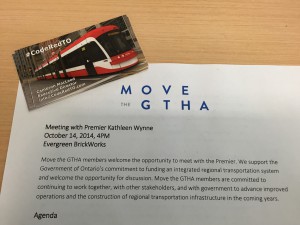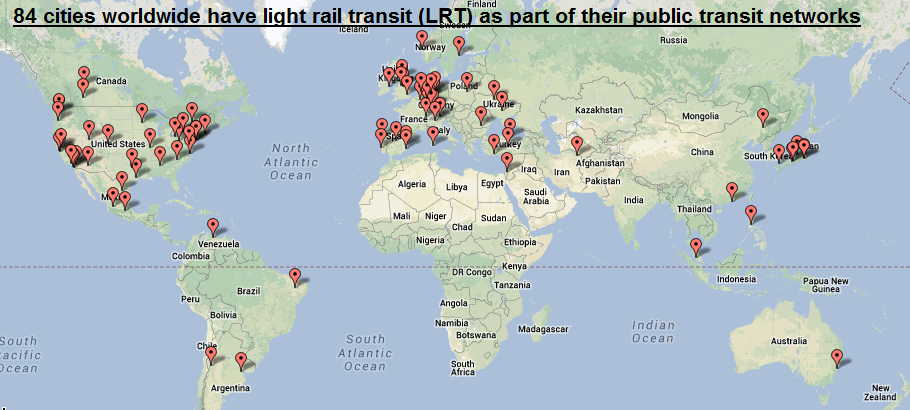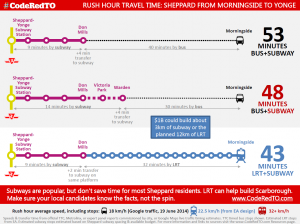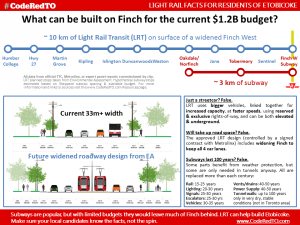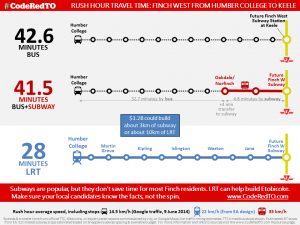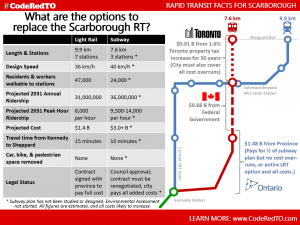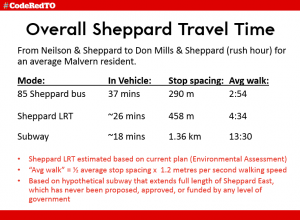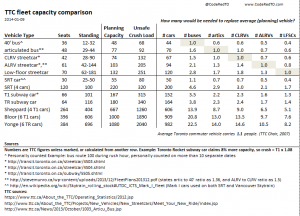MEDIA RELEASE
Mayor Tory’s Support For Existing Transit Projects A Welcome Change
After years of uncertainty and contradictory statements and plans from City Hall, CodeRedTO welcomes today’s statements from Mayor Tory’s office that the planned, approved, and 100%-provincially-funded modern light rail lines coming to Finch West and Sheppard East “will proceed as planned,” precisely as council voted exactly three years ago. [Finch, Sheppard]
“After a long municipal election that avoided definite statements on over $2.2 billion of spending inside Etobicoke and Scarborough, this is a welcome bit of clarity,” said Executive Director Cameron MacLeod.
Mayor Tory’s office signaled that, as planned, the Finch West LRT project will begin construction in 2017, opening in 2021. This line will replace one of Toronto’s busiest bus routes which currently serves over 44,000 riders per day – almost the same number as the Scarborough RT.
Similarly, the Sheppard East LRT project will be constructed in the same timeframe, and will include an underground across-the-platform connection to the Sheppard subway and easy connection to the future Bloor-Danforth subway extension. This line will carry over 36,000 riders per day, similar to the 85 Sheppard East and 190 Scarborough Centre Rocket buses.
The Sheppard East and Finch West LRT lines were first announced in 2007, fully funded by the province [for Finch, and partially by the federal government, for Sheppard] in 2009, including any cost overruns, and confirmed by City Council in 2012.
Unlike extensions to existing subway lines which require large capital investments by the city to construct, and cover only a small portion of the city, these two light rail lines will provide over 40 stops and over 22km of modern transit in reserved rights-of-way at no additional cost to the city’s capital budget. The vehicles will travel an average of 50-60% faster overall than the current overcrowded and unpredictable bus service.
CodeRedTO looks forward to the dramatic improvement in freedom of movement and reliability of public transit for such a large portion of our city, and future transit improvements discussed by Mayor Tory, City Council, and the TTC.
About CodeRedTO:
CodeRedTO is a non-partisan, volunteer-run, regional transit advocate which promotes more and better transit options for more residents, using all available technologies as appropriate; better information for better decision-making; an end to reversals of existing plans; and increased, predictable funding for public transit expansion and operation. Links to sources can be found at www.CodeRedTO.com.
Sources for statements attributed to Mayor Tory’s office:
http://m.torontosun.com/2015/03/18/city-ombud-term-lengths-eyed
https://twitter.com/agalbraith/status/578609806468067328
